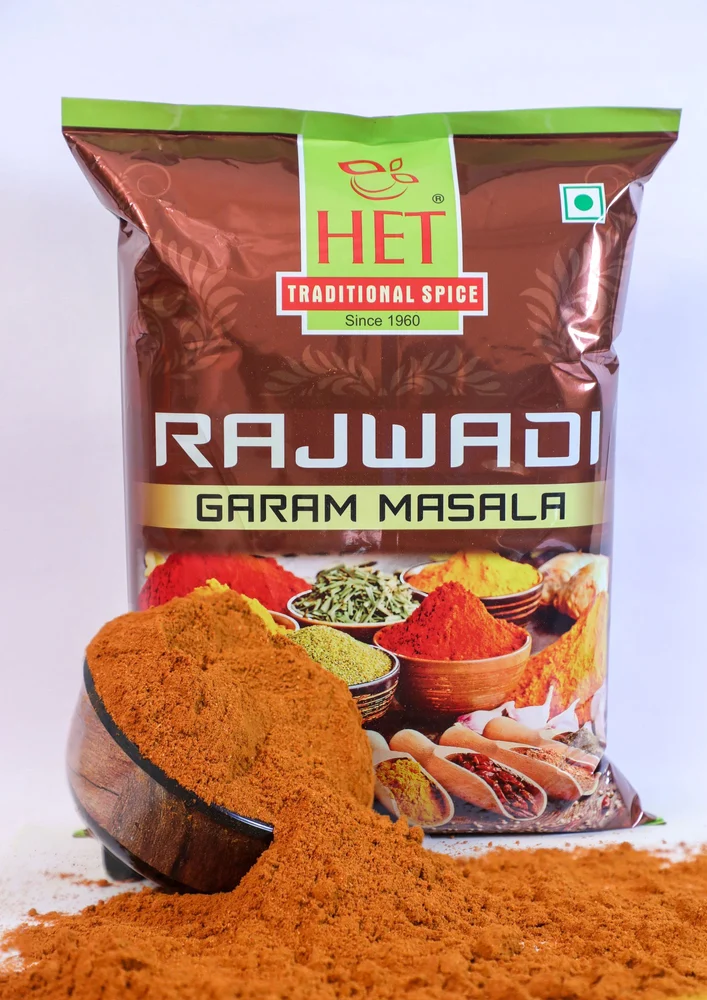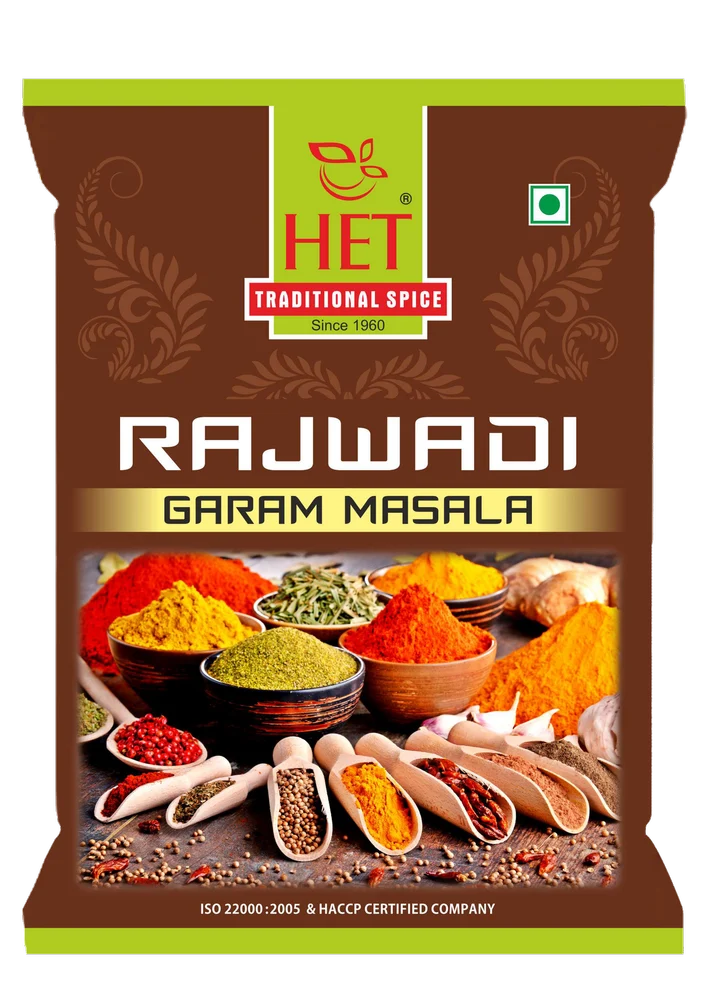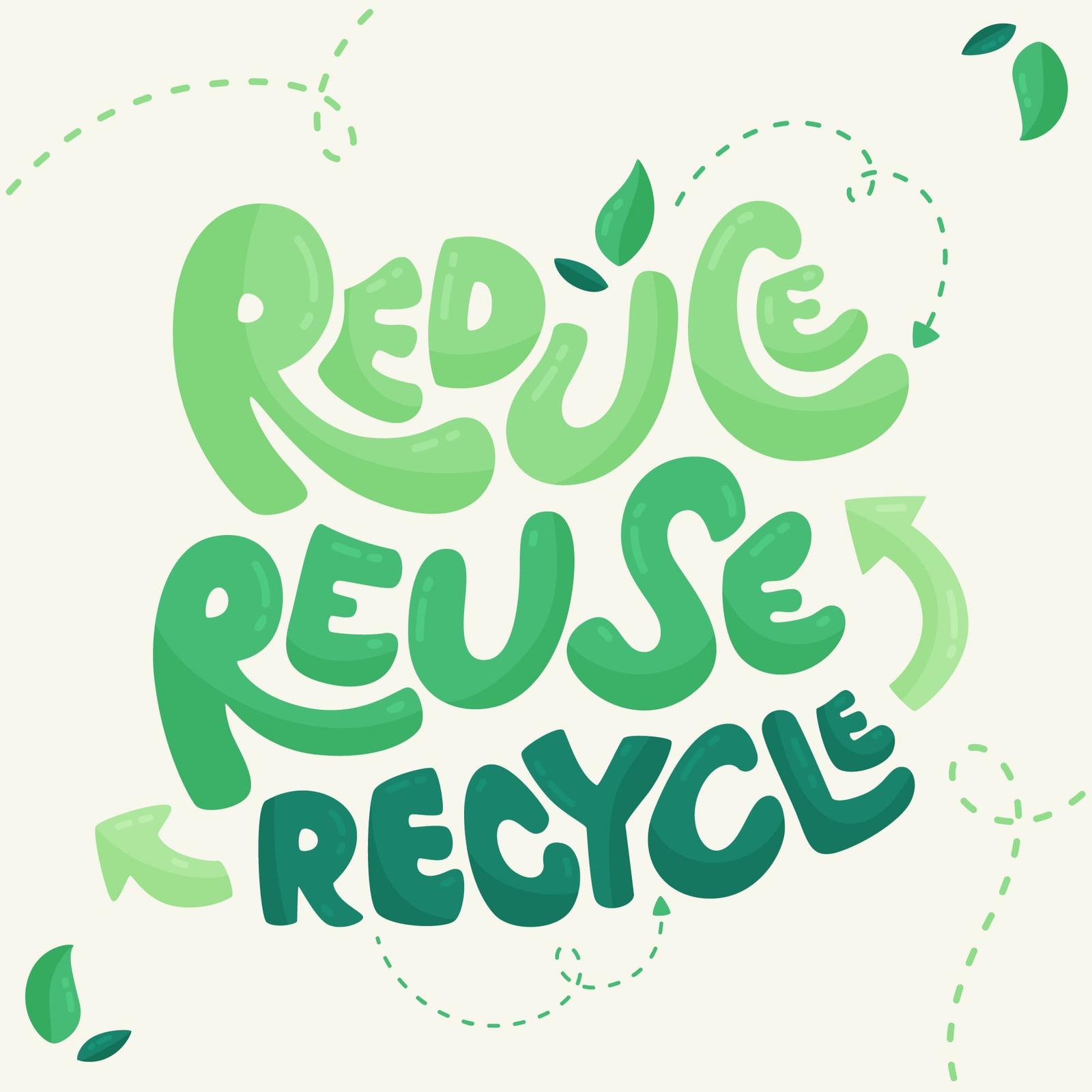Rajwadi Garam Masala Powder, 100g
₹220.0
| Form |
Powder
|
| Brand |
HET
|
| Packaging Type |
Packet
|
| Packaging Size |
100g
|
| Shelf Life |
6 Months
|
| Is It FSSAI Certified |
FSSAI Certified
|
| Usage/Applciation |
Kitchen
|
| Ingredients |
Garam Masala
|
Rajwadi Garam Masala Powder is a royal blend of rich and aromatic spices that elevates the flavor of traditional dishes. It adds warmth, depth, and an authentic regal taste to curries and gravies.
| Form |
Powder
|
| Brand |
HET
|
| Packaging Type |
Packet
|
| Packaging Size |
100g
|
| Shelf Life |
6 Months
|
| Is It FSSAI Certified |
FSSAI Certified
|
| Usage/Applciation |
Kitchen
|
| Ingredients |
Garam Masala
|
Rajwadi Garam Masala Powder is a royal blend of rich and aromatic spices that elevates the flavor of traditional dishes. It adds warmth, depth, and an authentic regal taste to curries and gravies.
You must be logged in to post a review.
Q & A
Scientific sustainability report — Rajwadi Garam Masala Powder (functional unit: 1 kg finished product)
1. Executive summary
Using conservative, literature-based assumptions for farm production, processing (drying + grinding), packaging and road transport, the estimated cradle-to-distribution greenhouse-gas (GHG) emissions for 1 kg of Rajwadi Garam Masala Powder are ≈ 3.095 kg CO₂-eq per kg under the stated assumptions. This is an order-of-magnitude, transparent estimate that you can refine with site-specific data. smart-freight-centre-media.s3.amazonaws.com+4static-cdn.publive.online+4ScienceDirect+4
2. Product & system boundary
-
Product: Rajwadi Garam Masala Powder — a blend typically containing cardamom, cinnamon, cloves, cumin, coriander, black pepper, nutmeg, and sometimes others. (Exact composition affects upstream emissions because of differences in yield and input intensity.)
-
Functional unit: 1 kg retail-ready powder.
-
System boundary: cradle → distribution: agriculture (production of component spices) → drying/cleaning → grinding/blending → primary packaging → road transport to distribution center. (Excludes retail use, consumer transport, and end-of-life disposal of packaging beyond embodied impacts.)
3. Key data sources & parameter choices (load-bearing)
-
Grid electricity emission factor (India, recent CEA baseline): 0.716 kg CO₂ / kWh (used for mill electricity). static-cdn.publive.online
-
Grinding energy (representative range for fine powder milling): literature shows a broad range; we use 0.25 kWh per kg for mixed-spice industrial grinding (a moderate value consistent with milling literature which shows values from ~0.09 to ~0.31 kWh/kg depending on fineness & equipment). ScienceDirect+1
-
Drying energy (industrial/assisted drying; moderate assumption): 0.80 kWh per kg (spice drying energy varies widely — solar tunnel and hybrid dryers show much higher or lower specific energy depending on design; we choose a moderate industrial assisted dryer value). worldresearchersassociations.com+1
-
Packaging: single-layer polyethylene pouch of 30 g plastic per kg product (0.03 kg plastic/kg). Use embodied emission 2.0 kg CO₂e per kg plastic (conservative, within typical LDPE/PE cradle-to-gate ranges). America's Plastic Makers+1
-
Road freight emission factor (India): 0.33 kg CO₂ per tonne-km (representative value used in India freight methodologies / default tables). We assume total road distance (farm→mill + mill→distribution) = 250 km. smart-freight-centre-media.s3.amazonaws.com+1
Notes: Where product-specific LCA data are unavailable we use conservative, documented values. You can replace any number below with measured values for an updated result.
4. Inventory assumptions (1 kg basis)
-
Agriculture / upstream (field stage): 2.20 kg CO₂e per kg finished masala powder — this lumps fertilizer, field diesel, soil N₂O, harvesting, primary handling and the aggregated contribution of multiple spices (cardamom, cinnamon etc. tend to have somewhat higher upstream intensity than simple cereal crops). This is an assumption for a mixed spice blend and should be replaced with crop-specific data where available.
-
Grinding (size reduction & blending): 0.25 kWh/kg.
-
Drying (if required after cleaning/conditioning): 0.80 kWh/kg.
-
Electricity EF: 0.716 kg CO₂/kWh (India grid baseline). static-cdn.publive.online
-
Packaging: 0.03 kg PE pouch × 2.0 kg CO₂e/kg plastic = packaging embodied CO₂. America's Plastic Makers
-
Transport: 250 km total, road emission factor 0.33 kgCO₂/t-km. smart-freight-centre-media.s3.amazonaws.com
5. Step-by-step GHG calculation (digit-by-digit arithmetic)
Notation: All arithmetic shown; round final line to 3 decimal places.
5.1 Electricity-related processing emissions
-
Grinding energy × grid EF =
0.25 kWh/kg × 0.716 kgCO₂/kWh
= 0.25 × 0.716 kg CO₂/kg
Calculation: 0.25 × 0.716 = (0.25 × 0.700) + (0.25 × 0.016) = 0.175 + 0.004 = 0.179 kg CO₂e/kg. ScienceDirect+1 -
Drying energy × grid EF =
0.80 kWh/kg × 0.716 kgCO₂/kWh
= 0.80 × 0.716 kg CO₂/kg
Calculation: 0.80 × 0.716 = (0.8 × 0.700) + (0.8 × 0.016) = 0.56 + 0.0128 = 0.5728 kg CO₂e/kg. worldresearchersassociations.com+1
5.2 Packaging emissions
-
Packaging mass × plastic EF =
0.03 kg plastic/kg × 2.0 kgCO₂/kg plastic
= 0.03 × 2.0 = 0.06 kg CO₂e/kg. America's Plastic Makers
5.3 Transport emissions (road)
-
Use EF per tonne-km = 0.33 kg CO₂ / t-km. For 1 kg product = 0.001 t. Distance = 250 km.
Road emissions = 0.33 (kgCO₂/t-km) × 0.001 (t) × 250 (km)
= 0.33 × 0.001 × 250 = 0.33 × 0.25 = 0.0825 kg CO₂e/kg. smart-freight-centre-media.s3.amazonaws.com
5.4 Agriculture / upstream
-
Assumed total farm stage (fertiliser, diesel, soil N₂O, primary handling across spice components): 2.20 kg CO₂e/kg. (See note in Section 4.)
5.5 Total (sum everything)
Now sum each component:
-
Agriculture = 2.2000 kg
-
Grinding = 0.1790 kg
-
Drying = 0.5728 kg
-
Packaging = 0.0600 kg
-
Transport = 0.0825 kg
Add stepwise (digit-by-digit):
-
2.2000 + 0.1790 = 2.3790
-
2.3790 + 0.5728 = 2.9518
-
2.9518 + 0.0600 = 3.0118
-
3.0118 + 0.0825 = 3.0943 kg CO₂e/kg
Rounded to three decimal places: 3.094 kg CO₂-eq per kg Rajwadi Garam Masala Powder. (If you prefer 2 significant figures, report ≈ 3.09 kg CO₂e/kg.)
6. Sensitivity & uncertainty (brief)
-
Largest uncertainty: the agriculture upstream figure (2.20 kg CO₂e/kg). Crop-specific fertilizer use, yield (kg/ha), irrigation (blue water/N₂O pathway) and prevalence of input-intensive spices (e.g., cardamom, mace/nutmeg) can change this number by ±50% or more. Using 1.2 kg CO₂e/kg vs 2.8 kg CO₂e/kg shifts total footprint substantially.
-
Drying method: switching from an electric dryer (0.8 kWh/kg) to hygienic solar tunnel drying or sun drying can reduce drying emissions toward zero, dropping total footprint by ~0.57 kg CO₂e/kg in our calculation. Recent solar/hybrid dryers show a wide range of specific energy — verify local technology. worldresearchersassociations.com+1
-
Electricity carbon intensity: using a renewable electricity source at the mill (onsite solar or green tariff) would drive processing emissions (grinding+drying) toward zero (−0.7518 kg CO₂e/kg in this case). CEA grid EF is region/time dependent. static-cdn.publive.online
-
Packaging: switching to lighter pouches or higher recycled content reduces packaging impact linearly; switching to recyclable mono-material laminates may improve end-of-life outcomes.
7. Other sustainability indicators (qualitative)
-
Water footprint: depends on origin crops. Many spice crops have lower blue-water intensity than cereals, but irrigation and post-harvest washing can add notable blue water use; collect crop-level water data for precision.
-
Pesticide & residue risk: spice crops sometimes face post-harvest pest challenges and pesticide use — good agricultural practices (GAP) and residue monitoring lower health & market risks.
-
Food safety & losses: poor drying or storage (moisture, mould, aflatoxin) increases waste and raises per-kg footprint; better drying+storage reduces both safety risks and footprint. worldresearchersassociations.com
8. Practical mitigation actions (priority list)
-
Use hygienic solar tunnel or hybrid drying where climate allows — sharply reduces drying energy footprint. worldresearchersassociations.com
-
Procure higher-yielding, lower-input spice sources or incentivize growers for improved nutrient management to reduce per-kg upstream emissions.
-
Install onsite solar at the mill or buy green electricity to reduce processing (grinding+drying) emissions. static-cdn.publive.online
-
Lightweight / high-PCR packaging: reduce gram weight and increase recycled content; perform packaging LCA to avoid trade-offs. America's Plastic Makers
-
Logistics optimization: maximize truck fill, consolidate loads, and favor rail where possible for long distances (rail t-km emissions typically much lower). Use route planning to reduce empty backhauls. smart-freight-centre-media.s3.amazonaws.com
9. How to make this a defensible LCA (next steps)
To convert this estimate into a formal LCA product footprint:
-
Collect actual farm inputs per ingredient: kg N, P, K per ha; yields (kg/ha); irrigation water source and volume; and pesticide use.
-
Measure plant electricity consumption for grinding and drying (kWh per kg) from utility bills or submetering.
-
Record actual packaging mass & supplier EPDs (Environmental Product Declarations) for the laminate.
-
Use an LCA tool (e.g., openLCA, SimaPro, GaBi) and follow ISO 14040/44 and GHG Protocol Product Standard for allocation, temporal boundaries and reporting. static-cdn.publive.online+1
10. Selected references (sources used for key numbers)
-
CEA — CO₂ Baseline Database for the Indian Power Sector (User Guide, recent version). — India grid emission factor used (0.716 kgCO₂/kWh). static-cdn.publive.online
-
Blanc, N. et al. (2020) — Evolution of grinding energy and particle size during dry fine grinding — literature on energy dependence of fine grinding (used to anchor grinding kWh/kg). ScienceDirect
-
Ragul Kumar et al. / Solar tunnel & hybrid dryer studies — specific energy examples and comparisons for spice/chilli/turmeric drying (used to inform drying kWh/kg and solar dryer potential). worldresearchersassociations.com+1
-
Resin & polyethylene LCI / reports — observed cradle-to-gate emissions for PE resins and packaging (used for packaging embodied emission). America's Plastic Makers+1
-
Smart Freight Centre / India default GHG emission values & TERI methodology — road freight emission factors and methodologies for India (used for 0.33 kgCO₂/t-km assumption). smart-freight-centre-media.s3.amazonaws.com+1
11. Quick conclusions
-
Under conservative, documented assumptions, Rajwadi Garam Masala Powder ≈ 3.09 kg CO₂-eq per kg (cradle → distribution). static-cdn.publive.online+1
-
Greatest opportunities to reduce footprint: lower upstream inputs & losses, switch to low-energy drying (solar/hybrid), use renewable electricity for processing, and optimize packaging & logistics. worldresearchersassociations.com+2America's Plastic Makers+2
General Inquiries
There are no inquiries yet.





Reviews
There are no reviews yet.